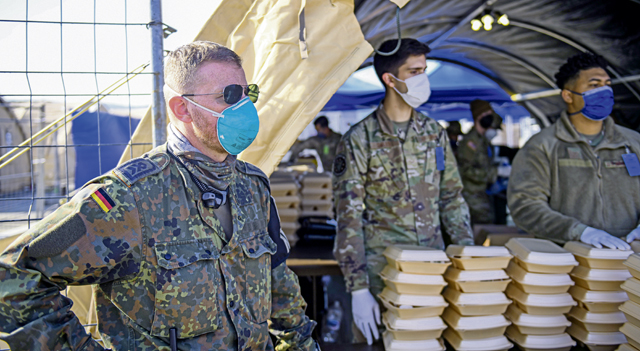The German military sent 200 volunteers to Ramstein Air Base, in support of Operation Allies Refuge throughout the months of August and September.
The arrival of the German military came in response to tremendous demand and a limited number of U.S. military members being capable of supporting due to normal mission operations remaining unchanged.

“It’s been immensely helpful having this joint effort and having everyone come together as a team,” said U.S. Air Force Capt. Todd Locke, 786th Civil Engineer Squadron explosive ordnance disposal flight commander and Pod three commander. “Ramstein can only provide so many additional bodies, having the augmentation of the Germans and the other services that are here helping have been huge. We’ve gone from 20 volunteers trying to take care of 3,000 to close to 60.”
Despite the short notice, the German military response and integration with American and other allied countries was nearly immediate. Upon hearing about a potential response being needed, the German military had their teams sitting alert until their services were officially requested.
“We spoke to our forces to make a reconnaissance team to see where we could support and where it was reasonable to support, from there I prepared the participating military police companies and placed them on hold,” said German Feldjaeger Capt. Roman Kraus, leader for the coordination of the military police at RAB. “Once we heard we were good to go, I alerted all of our supporters to get in their cars and come here as fast as possible, and by the next day, we started our entire response.”
The German military response has benefited the Afghan evacuees by giving them access to food more quickly and ensuring sufficient support to provide other needs within the pods are met.
“The German services have been a big help with food distribution, interacting and playing with the kids.” Locke said. “They’ve been providing a safe environment for everyone, as well as crowd control. When we have contractors in to clean the facilities, they’ve been helping the truck through and are able to communicate with the German truck drivers, bridging the gap of the language barrier that we have.”
Partnerships like this are what the U.S. Air Force strives for. Providing opportunities to work together in unity and promote mission readiness globally remains at the forefront of every mission.
“Anytime we have the opportunity to work outside of our branch, especially in joint and different environments, we learn their operations and understand how to communicate with them,” Locke said. “It allows us to learn the different nuances surrounding their culture and military; learning their rank structure, how they operate if they’re put in a situation similar to OAR or something completely different. We understand how their military is built, what the different sections are, and know their culture, it helps us bridge that gap quicker.”


